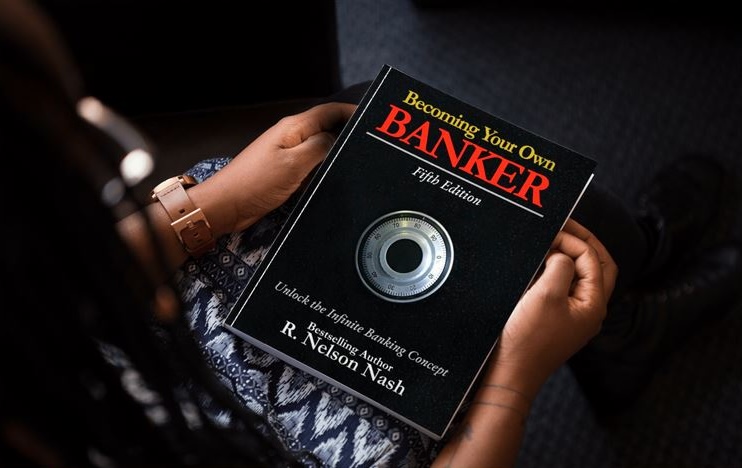Navigating the world of life insurance can feel like learning a new language. Two terms you’ll encounter repeatedly are “cash value” and “death benefit” — understanding their distinct roles is crucial for making smart financial decisions.
Permanent life insurance policies offer more than just protection after you’re gone. They can serve as powerful financial tools during your lifetime through their cash value component, while the death benefit provides the financial security most people associate with life insurance.
Let’s break down both components, explore their differences, and show how they can work together to create a robust financial strategy that works both now and in the future.
What Is Cash Value?
Cash value is the savings component of a permanent life insurance policy that builds over time. Unlike term life insurance, which only provides coverage for a specific period, permanent policies like whole life and universal life accumulate cash value throughout the policy’s lifetime.

How Cash Value Works
When you pay premiums on a permanent life insurance policy, a portion goes toward insurance costs and company expenses, while the remainder contributes to your policy’s cash value. This cash value grows tax-deferred based on a minimum interest rate (in whole life policies) or based on market performance (in universal life policies).
The key advantage of cash value is that it’s a living benefit — you can access and use it while you’re still alive, creating a unique financial resource that grows steadily over time with less volatility than many market-based investments.
Accessing Your Cash Value
Your policy’s cash value can be accessed in several ways:
- Policy loans: Borrow against your cash value, often at competitive interest rates, using your policy as collateral.
- Partial withdrawals: Some policies allow you to withdraw a portion of your cash value directly, though this may reduce your death benefit.
- Surrender: You can cancel your policy and receive the cash surrender value, though this terminates your coverage.
- Paid-up additions: Some policies allow you to use dividends to purchase additional paid-up insurance, increasing both your cash value and death benefit.
Cash Value and the Infinite Banking Concept
The Infinite Banking Concept leverages the cash value of whole life insurance policies to create your own personal banking system. With a properly structured participating whole life policy, you can:
- Build substantial cash value that grows at competitive rates plus potential dividends
- Borrow against your cash value for major purchases, investments, or emergencies
- Continue earning interest on your full cash value, even when you’ve borrowed against it
- Create a financial system that you control, not a traditional bank
This approach transforms life insurance from merely a death benefit provider into a comprehensive financial tool for funding education, purchasing real estate, or investing in business opportunities.
Real-World Examples of Cash Value Utilization
Sarah’s Story: When traditional banks tightened lending during an economic downturn, Sarah, a business owner, tapped her policy’s cash value to fund an expansion. By borrowing against her cash value, she grew her business without dealing with rigid bank qualification requirements or repayment terms.
Michael’s Approach: During a market dip, Michael used his policy’s cash value to purchase investment properties. While others struggled to secure financing, he had immediate access to capital that continued growing even as he deployed it elsewhere.
These examples show how cash value serves as both a savings vehicle and an accessible source of capital that provides flexibility rarely found in other financial products.
Take control of your financial future.
Schedule a consultation with Ascendant Financial and ensure your financial choices align with your long-term goals — before it’s too late.
What Is a Death Benefit?
The death benefit is the amount paid to your beneficiaries when you pass away — the primary purpose of any life insurance policy and a financial safety net for your loved ones.
Core Functions of the Death Benefit
The death benefit performs several critical functions:
- Income replacement: Helps your family maintain their standard of living
- Debt payoff: Covers outstanding debts like mortgages or credit cards
- Final expense coverage: Pays for funeral costs and other end-of-life expenses
- Legacy creation: Provides an inheritance for loved ones or charitable organizations
- Business continuation: For business owners, funds buy-sell agreements or key person replacement
Tax Advantages of Death Benefits
One of the most significant advantages of life insurance death benefits is their tax treatment. In most cases, death benefit proceeds are paid to beneficiaries income tax-free, making life insurance an efficient wealth transfer tool that allows you to pass on assets without the burden of income taxes.
Structuring Death Benefits for Maximum Impact
Death benefits can be structured in various ways to suit your specific goals:
- Lump sum distribution: The entire death benefit is paid at once.
- Installment payments: The death benefit is paid over time, potentially with interest on the unpaid portion.
- Retained asset account: The insurance company holds the funds in an interest-bearing account, and beneficiaries can withdraw as needed.
- Life income option: The death benefit is converted into a lifetime income stream for your beneficiary.
By thoughtfully structuring your death benefit payout, you can ensure your financial legacy accomplishes exactly what you intend, whether providing immediate liquidity or long-term financial security.
Long-Term Wealth Preservation Through Death Benefits
Death benefits play a crucial role in long-term wealth preservation. When properly structured, life insurance can help you:
- Transfer wealth across generations with minimal tax implications
- Protect assets from potential creditors (in many states)
- Create estate liquidity to cover taxes and other expenses
- Equalize inheritances among heirs, especially when some assets (like businesses) can’t be easily divided
This wealth preservation aspect makes the death benefit more than just a payout—it’s a strategic tool for comprehensive legacy planning.
Cash Value vs Death Benefit: Key Differences
Understanding the distinctions between cash value and death benefit is essential for effectively using your life insurance policy. Let’s compare these components across several key dimensions:
Accessibility
- Cash Value: Available during your lifetime through loans, withdrawals, or surrender.
- Death Benefit: Only available to beneficiaries after your passing.
Purpose
- Cash Value: A living benefit for your financial needs or opportunities during your lifetime.
- Death Benefit: Financial protection for loved ones after you’re gone.
Growth Potential
- Cash Value: Grows over time through interest and potential dividends (in participating policies).
- Death Benefit: Generally remains level in traditional whole life policies, though it can increase through dividends, paid-up additions, or riders.
Tax Treatment
- Cash Value: Grows tax-deferred. Loans are generally not taxable, but withdrawals above your basis (premiums paid) may be taxed.
- Death Benefit: Generally paid income tax-free to beneficiaries.
Longevity
- Cash Value: Builds gradually over the life of the policy, with greatest growth in later years.
- Death Benefit: Available immediately upon policy issue (after any contestability period).
Understanding these differences is particularly important when implementing the Infinite Banking Concept, which capitalizes on both components’ strengths to create a cohesive financial strategy.
How We Leverage Cash Value and Death Benefit
At Ascendant Financial, we take a thoughtful approach to life insurance that optimizes both the cash value and death benefit components through the Infinite Banking Concept.

Our Approach to Policy Design
Unlike traditional insurance models that often prioritize either cash value or death benefit at the expense of the other, we design policies that enhance both elements:
- Strategic premium structuring: We design policies with an effective mix of base premium and paid-up additions to accelerate cash value growth while maintaining appropriate death benefit protection.
- Dividend optimization: We help you leverage dividends to purchase paid-up additions, potentially increasing both your cash value and death benefit over time.
- Policy loan strategy: We teach you how to strategically use policy loans while maintaining your policy’s growth trajectory.
Personalized Financial Strategies
Our approach isn’t one-size-fits-all. We develop personalized strategies based on your:
- Current financial situation
- Short and long-term financial goals
- Family circumstances
- Business needs (if applicable)
- Risk tolerance and time horizon
This personalized approach ensures your life insurance policy works harmoniously with your overall financial plan.
Real-World Applications
Many clients come to Ascendant Financial seeking ways to fund their children’s education while building long-term wealth.
Through our approach to whole life insurance, we help establish policies that:
- Build substantial cash value that can be accessed for tuition payments
- Provide death benefit protection for the family
- Create a tax-advantaged environment for wealth growth
- Establish a legacy for future generations
By the time children reach college age, properly structured policies typically accumulate sufficient cash value to fund education expenses through policy loans, while the death benefit provides enhanced protection for the family.
Comprehensive Education
What truly sets Ascendant Financial apart is our commitment to education. We don’t just sell policies; we empower you to become your own banker through:
- One-on-one consultations
- Educational webinars on the Infinite Banking Concept
- Ongoing policy reviews and strategy adjustments
- Resources to help you maximize both your cash value and death benefit
Through this educational approach, our clients develop the knowledge and confidence to use their policies as powerful financial tools rather than passive insurance products.
Is Cash Value or Death Benefit More Important for You?
Determining whether to prioritize cash value or death benefit depends on your specific financial goals and life stage. Here’s how to assess what might be more important for your situation:
When to Prioritize Cash Value
Cash value might take precedence when:
- You need a tax-advantaged savings vehicle: If you’ve maxed out contributions to other tax-advantaged retirement accounts (like 401(k)s/IRAs in the US or RRSPs/TFSAs in Canada), cash value life insurance provides another tax-favorable environment.
- You want financial flexibility: If access to capital for opportunities or emergencies is important, cash value provides liquidity without the restrictions of qualified retirement plans in either the US or Canada.
- You’re building a banking system: If you’re implementing the Infinite Banking Concept, cash value forms the foundation of your personal banking system.
- You have a long time horizon: The earlier you start, the more powerful cash value becomes due to compounding growth.
When to Prioritize Death Benefit
Death benefit might take precedence when:
- You have significant financial obligations: If you have a mortgage, young children, or other substantial financial responsibilities, ensuring adequate protection through the death benefit is critical.
- You have business continuation needs: Business owners often need substantial death benefits to fund buy-sell agreements or key person replacement.
- You’re focused on legacy planning: If creating a financial legacy for heirs or charitable causes is important, the death benefit provides an efficient wealth transfer mechanism.
- You want to equalize inheritances: If you have assets that can’t be easily divided (like a business), life insurance death benefits can help equalize inheritances among heirs.
Finding the Right Balance
In reality, most people benefit from balancing both components. Well-structured permanent life insurance doesn’t force an either/or decision. Through proper policy design, you can:
- Accelerate early cash value growth while maintaining sufficient death benefit protection
- Use policy dividends to increase both components over time
- Adjust your focus as your financial situation and goals evolve
At Ascendant Financial, we help clients find this balance through personalized policy design and ongoing strategy adjustments as life circumstances change.
Ready to take control of your financial future?
Speak with an Ascendant Financial Advisor today and start building a strategy that protects your legacy.
Common Questions About Cash Value and Death Benefit
Do you get both death benefit and cash value?
This common question stems from a misunderstanding about how permanent life insurance works.
In a permanent life insurance policy, cash value and death benefit are interconnected, not separate components received independently. The cash value grows within the policy and can be accessed during your lifetime through various methods discussed earlier.
However, when the insured passes away, beneficiaries typically receive only the death benefit, not the death benefit plus the cash value. This is because the cash value is effectively absorbed into and becomes part of the death benefit.
This doesn’t mean you “lose” your cash value. Rather, you had the opportunity to use it during your lifetime (which is its purpose), and any unused cash value contributes to the death benefit your beneficiaries receive.
What is the difference between death benefit and cash surrender value?
While they sound similar, death benefit and cash surrender value serve different purposes:
- Death benefit is the amount paid to your beneficiaries when you pass away — the primary protection component of life insurance.
- Cash surrender value is the amount you’d receive if you terminated (surrendered) your policy before death. It’s typically less than the full cash value, especially in the early years of the policy, due to surrender charges imposed by the insurance company.
Surrendering a policy for its cash surrender value terminates your coverage, meaning your beneficiaries would no longer receive a death benefit. This is rarely the optimal way to access your policy’s value, which is why we generally recommend policy loans instead of surrenders when you need to access your cash value.
Explore more about cash surrender value and how it fits into your financial picture.
Do you get both death benefit and cash value in an IUL?
Indexed Universal Life (IUL) policies function similarly to other permanent life insurance policies regarding the relationship between cash value and death benefit.
In an IUL:
- You build cash value that’s tied to the performance of a market index (with caps on the upside and floors protecting against loss)
- You can access this cash value during your lifetime through loans or withdrawals
- Your beneficiaries receive the death benefit (not the death benefit plus the cash value) upon your passing
IULs offer potential for higher cash value growth than traditional whole life policies, but also come with greater complexity and less certainty regarding both cash value growth and death benefit stability. The cash value growth in IULs is not guaranteed, which can impact both the policy’s long-term cash value and potentially its death benefit if the policy doesn’t perform as projected.
Conclusion & Next Steps
Understanding the relationship between cash value and death benefit is fundamental to leveraging permanent life insurance as a comprehensive financial tool. While they serve different purposes, together they create a powerful mechanism for both living benefits and legacy planning.
Cash value provides the living benefits and financial flexibility you can enjoy throughout your lifetime, while the death benefit ensures your loved ones remain protected and your legacy goals are fulfilled. A well-structured policy doesn’t force you to choose between them, but rather optimizes both components to serve your overall financial strategy.
At Ascendant Financial, we specialize in helping clients implement the Infinite Banking Concept through properly designed whole life insurance policies. Our approach goes beyond traditional insurance planning to create a financial system that provides:
- Tax-advantaged growth
- Accessible capital for opportunities or emergencies
- Stable growth potential regardless of market conditions
- Long-term wealth building and preservation
- Efficient wealth transfer to future generations
Ready to explore how cash value and death benefit can work together in your financial strategy? We invite you to take the next step:egister for our upcoming Infinite Banking Concept webinar to learn more about this powerful financial strategy.
Remember, financial freedom isn’t just about accumulating assets; it’s about creating a system that gives you control, flexibility, and security throughout every stage of life. Understanding and effectively utilizing both cash value and death benefit is a crucial step on that journey.
Book a Call with an Advisor at Ascendant Financial
Contact Ascendant Financial today to review all of your financial options.

Popular Posts
- Understanding Life Insurance Dividends: Taking Advantage of Compounding Growth
 Did you know that you can get a dividend-paying whole life insurance policy that you can borrow against? In participating whole life insurance policies, policyholders… Read more: Understanding Life Insurance Dividends: Taking Advantage of Compounding Growth
Did you know that you can get a dividend-paying whole life insurance policy that you can borrow against? In participating whole life insurance policies, policyholders… Read more: Understanding Life Insurance Dividends: Taking Advantage of Compounding Growth - Infinite Banking Examples: Understanding the Concept and Its Real-World Application
 Infinite banking is more than a concept; it’s how you take control of your wealth and financial independence. Until today, you may have relied on… Read more: Infinite Banking Examples: Understanding the Concept and Its Real-World Application
Infinite banking is more than a concept; it’s how you take control of your wealth and financial independence. Until today, you may have relied on… Read more: Infinite Banking Examples: Understanding the Concept and Its Real-World Application
Share This Post
About the Author:
Jayson Lowe
As a seasoned coach, author, and podcast host, Jayson’s insights are rooted in real-world experience and a proven track record of turning challenges into opportunities. He’s not just a speaker—he’s a catalyst for change, inspiring audiences with actionable strategies and the motivation to implement them. Whether you’re looking to ignite your team’s potential, elevate your business strategies, or gain unparalleled insights into entrepreneurship, Jayson Lowe delivers with passion, clarity, and an undeniable impact.
Categories & Tags






